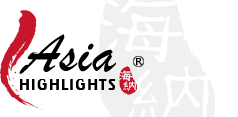Mount Fuji is an iconic symbol of Japan, drawing countless travelers each year. However, it's not visible every day — only about 100 days a year. To increase your chances of seeing this top highlight, it's important to choose the best time to visit. Want some insider tips?
Find out the best month and time of day to see Mount Fuji in this article.
When Is the Best Month to See Mount Fuji?
 Seeing Mount Fuji in Lake Kawaguchi
Seeing Mount Fuji in Lake KawaguchiFor the clearest views of Mount Fuji, colder months are your best bet. December to February is the best time to see the mountain when it has the most visibility. On the other hand, June to September offers the lowest visibility for viewing Mount Fuji.
Mount Fuji's snow-covered peak isn't visible year-round because the snow melts during warmer weather. The mountain typically has a snow cap from late November to early May, while the rest of the year is snow-free.
For the best chance to see Mount Fuji clearly, check the visibility forecast on SeeMtFuji about a week before your trip. The forecast is updated in real time, so it's also a good idea to check it again on the day of your visit.
This is the official data showing how many days Mount Fuji is visible each month in 2024. Since visibility is similar year to year, this could help you plan your visit to see Mount Fuji.
| Month | Full Visibility Days | Partial Visibility Days | Invisible Days |
|---|---|---|---|
| December | 27 | 3 | 1 |
| January | 23 | 4 | 4 |
| February | 13 | 6 | 10 |
| March | 15 | 7 | 9 |
| April | 8 | 11 | 11 |
| May | 13 | 6 | 12 |
| June | 5 | 10 | 15 |
| July | 9 | 7 | 15 |
| August | 4 | 10 | 17 |
| September | 10 | 10 | 10 |
| October | 12 | 12 | 7 |
| November | 11 | 12 | 7 |

Visiting Mount Fuji in December to February: Best Visibility
 Mount Fuji in winter
Mount Fuji in winterFrom December to February, you have the best chance of seeing Mount Fuji clearly, thanks to the frequent sunny and clear days. The mountain is often 100% visible from Lake Kawaguchi and Lake Yamanaka while views from other locations may not be as good.
During this time, capturing photos of Mount Fuji's reflection on the lake is at its best. You could even catch the unique 'Diamond Fuji' phenomenon, where the sun lines up perfectly at the mountain's peak, making it sparkle like a diamond. Plus, it's perfect to relax in onsens while enjoying views of Mount Fuji.
Even though December to February are the coldest months in Japan, the lake doesn't freeze. This means you could still take a boat ride and admire the view of Mount Fuji.
If you're interested in seeing Mount Fuji in winter and experiencing other unique winter activities in Japan, our Japan travel advisors are here to help you tailor your tour based on your preferences.
Visiting Mount Fuji in March to May: Most Beautiful Season
 Mount Fuji with cherry blossoms
Mount Fuji with cherry blossomsMarch to May is the most picturesque season around Mount Fuji, with flowers blooming around the lakes and the mountain as the backdrop.
- April: This is best for admiring cherry blossoms at Lake Kawaguchi.
- May: Enjoy the pastel purple shibazakura at Lake Motosu.
April to May is also the ideal time for outdoor activities. The weather is mild — it's neither too cold nor too hot — with plenty of sunny days. It's perfect for light hiking or biking around the lakes while enjoying views of Mount Fuji.
During these months, the visibility of Mount Fuji remains excellent, with a 50% chance of clear, unobstructed views. For the best experience, we recommend staying overnight in the Fuji Five Lakes area, which increases your chances of seeing the mountain.
The early morning, usually between 6am and 8am, offers the best visibility of Mount Fuji. Fuji Five Lakes is home to many excellent hotels. Some feature rooms with mountain views and many even offer hot springs where you could soak in the water while admiring Mount Fuji. It's an experience well worth having.
Visiting Mount Fuji in June to August: Rainy Season
From June to August, Japan experiences its rainy season and Mount Fuji is no exception. During this time, visibility is often at its lowest, so you might not even see the mountain. Additionally, there's no snow on the peak. If you're planning a trip to see Mount Fuji, this might not be the best time to visit.
You're recommended to visit Hakone during these months. It offers a variety of experiences that are perfect for both kids and adults, such as riding the ropeway to Ōwakudani, exploring the Hakone Open-Air Museum, and enjoying a scenic sightseeing cruise.
Visiting Mount Fuji in September to November: Fall Foliage Season
 Mount Fuji with fall foliage
Mount Fuji with fall foliageAs the weather cools down, the visibility of Mount Fuji improves, and your chances of seeing the mountain increase.
In September, the chances of seeing Mount Fuji start to rise. However, it's also typhoon season in Japan, so clouds could hide the mountain sometimes.
October and November are the better months to see Mount Fuji. During this time, the weather turns cooler and drier, with fewer clouds blocking the view. It's also perfect for outdoor activities like camping or exploring the ice and wind caves. In late November, you could enjoy the autumn foliage surrounding the mountain.
Want to plan a Japan tour to see Mount Fuji with autumn foliage? Contact us to customize your unique itinerary now!
Best Time of Day to See Mount Fuji
 Mount Fuji in early morning
Mount Fuji in early morningThe best time to enjoy a clear view of Mount Fuji is in the morning, especially between 6am and 8am. During this period, there is almost no cloud cover and visibility is at its peak. Additionally, the front lighting creates ideal conditions for capturing high-quality photos.
You're strongly recommended to stay overnight at Lake Kawaguchi or Lake Yamanaka. This gives you more time to enjoy the clear views of Mount Fuji and helps you avoid the crowds.
Visibility often starts to decline after 11am. By noon, the chances of clouds obscuring Mount Fuji increase significantly. Additionally, the mountain becomes backlit, further reducing visibility and resulting in darker photos.
For a more accurate forecast of Mount Fuji's visibility, we recommend checking real-time updates on the SeeMtFuji app before heading out in the morning.
Where to See Mount Fuji: Lake Kawaguchi or Hakone?
 Viewing Mount Fuji from Hakone
Viewing Mount Fuji from HakoneLake Kawaguchi and Hakone are both perfect places to view Mount Fuji.
If seeing Mount Fuji is your top priority, Lake Kawaguchi is the best option. Located closer to the mountain, it offers a complete and unobstructed view, along with the highest chance of clear visibility.
We don't recommend visiting Lake Kawaguchi from June to September as the chances of seeing Mount Fuji are the lowest due to the rainy season. Additionally, there aren't many other experiences around Lake Kawaguchi besides viewing Mount Fuji. Consider visiting Hakone instead during this time for a more diverse experience.
- Suggested month: year-round, except June to September
If you're not too focused on viewing Mount Fuji and want to explore more highlights, Hakone is ideal. Since Hakone is farther from Mount Fuji, you would only see part of the mountain. Also, Hakone provides limited visibility most of the time due to it being a mountainous area. However, you could enjoy a view of Owakudani, visit a museum, and have other experiences.
- Suggested month: December to February for the clearest visibility
Plan Your Mount Fuji Trip

Are you ready to plan your trip to see Mount Fuji? Our Japan travel experts are here to help design a trip tailored to your preferences. When you book with us, we'll take care of everything, ensuring you have a hassle-free journey. Contact us now!
Here are our two most popular Japan tours, both of which include a visit to Mount Fuji. Check them out for more ideas.
- 8-Day Essential Japan Family Trip: Osaka – Kyoto – Mount Fuji – Tokyo
- 12-Day Classic Japan Tour: Tokyo – Mount Fuji – Takayama – Kanazawa – Kyoto – Nara – Osaka
Get Inspired with Some Popular Itineraries
At Asia Highlights, we create your kind of journey — your dates, your destinations, at your pace. You can have any trip tailor made for your travel.



